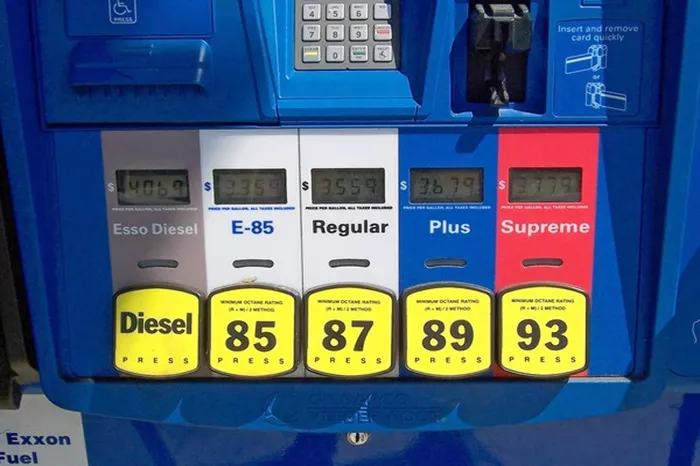Gasoline, also known as petrol in many parts of the world, is a vital fuel for internal combustion engines. It powers everything from cars to lawnmowers, making it indispensable in modern society. However, not all gasoline is created equal. Understanding the grades of gasoline can help consumers make informed decisions about their vehicle’s performance and efficiency.
What is Gasoline?
Gasoline is a refined petroleum product derived from crude oil through a process called fractional distillation. It consists primarily of hydrocarbons, which are organic compounds composed exclusively of hydrogen and carbon atoms. These hydrocarbons come in various forms and lengths, affecting gasoline’s properties such as volatility and energy content.
The Importance of Gasoline Grades
Gasoline grades are differentiated primarily by their octane rating, which indicates the fuel’s resistance to premature detonation, also known as knocking or pinging. Knocking occurs when the air-fuel mixture ignites spontaneously before the spark plug fires, leading to inefficient combustion and potential engine damage over time.
Regular Unleaded Gasoline (87 Octane)
Regular unleaded gasoline, typically labeled as 87 octane in the United States and Canada, is the most commonly used grade of gasoline. It is suitable for most vehicles that do not require higher-octane fuel. The octane rating of 87 signifies that the gasoline is formulated to resist knocking under typical driving conditions for most cars on the road today.
Mid-Grade Gasoline (89-90 Octane)
Mid-grade gasoline, also known as plus or mid-range gasoline, typically falls within the octane range of 89 to 90. This grade of gasoline offers a balance between cost and performance for vehicles that may benefit from slightly higher octane ratings than regular gasoline. Some vehicles with moderate compression ratios or turbocharged engines may perform optimally with mid-grade gasoline to prevent knocking.
Premium Unleaded Gasoline (91-94 Octane)
Premium unleaded gasoline is formulated with higher octane ratings ranging from 91 to 94 octane. This grade of gasoline is designed for vehicles with high-performance engines that require increased resistance to knocking. Sports cars, luxury vehicles, and certain high-performance engines often specify the use of premium gasoline to maximize power output and engine efficiency.
Factors Affecting Gasoline Grades
Several factors influence the choice and availability of gasoline grades:
Engine Design and Compression Ratio: Engines with higher compression ratios require higher-octane gasoline to prevent knocking and achieve optimal performance.
Fuel Economy: While higher-octane fuels can potentially improve fuel economy in certain engines, the cost difference must be weighed against the benefits.
Environmental Regulations: Some regions have regulations requiring the availability of lower-octane gasoline (e.g., 87 octane) to meet emissions standards and ensure compatibility with a wide range of vehicles.
See also: UK Supreme Court Rules Greenhouse Gas Emissions Must Factor
Selecting the Right Gasoline for Your Vehicle
Choosing the correct gasoline grade for your vehicle is crucial for maintaining performance, efficiency, and engine longevity:
Consult Your Owner’s Manual: Manufacturers specify the recommended gasoline grade for each vehicle model. Adhering to these recommendations ensures optimal performance and warranty compliance.
Consider Performance Needs: If your vehicle’s manual recommends regular gasoline, using a higher-octane fuel will not provide additional benefits and may be an unnecessary expense.
Understand Regional Variations: Gasoline grades and octane ratings can vary by region and country. Be aware of local standards and availability when traveling.
Common Misconceptions About Gasoline Grades
Several myths and misconceptions surround gasoline grades and their impact on vehicle performance:
Higher Octane Equals Better Performance: While higher-octane gasoline is essential for specific engines, using it in vehicles that do not require it offers no performance benefits and may even result in increased emissions and fuel costs.
Fuel Additives Improve Octane Rating: While fuel additives can enhance certain properties of gasoline, they do not alter the base octane rating significantly.
Regular Gasoline is Lower Quality: Regular gasoline meets stringent quality standards and is suitable for the majority of vehicles on the road today.
The Future of Gasoline Grades
As automotive technology evolves, the demand for higher-octane gasoline may increase to support more efficient and powerful engines. Additionally, advancements in fuel refining processes and additives may further optimize gasoline performance while meeting environmental regulations.
Conclusion
Understanding the grades of gasoline empowers consumers to make informed decisions about fueling their vehicles. Whether choosing regular, mid-grade, or premium gasoline, selecting the appropriate octane rating as recommended by the vehicle manufacturer ensures optimal performance, efficiency, and engine longevity. As the automotive industry continues to evolve, gasoline grades will play a crucial role in supporting technological advancements and meeting consumer demands for cleaner, more efficient vehicles.
Related topics:
Retail Prices of Cooking Gas and Kerosene Rise in May 2024, Reports NBS

